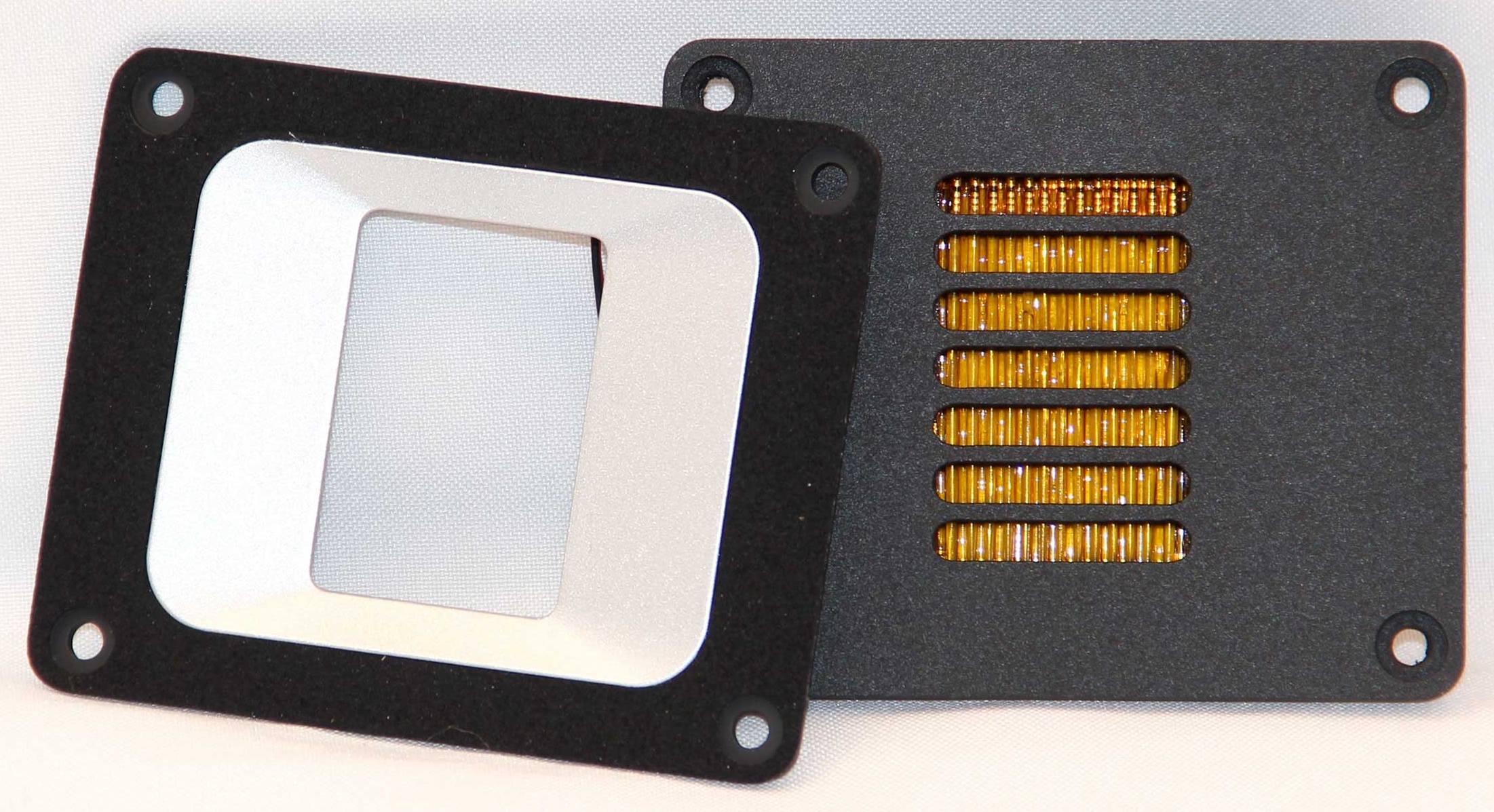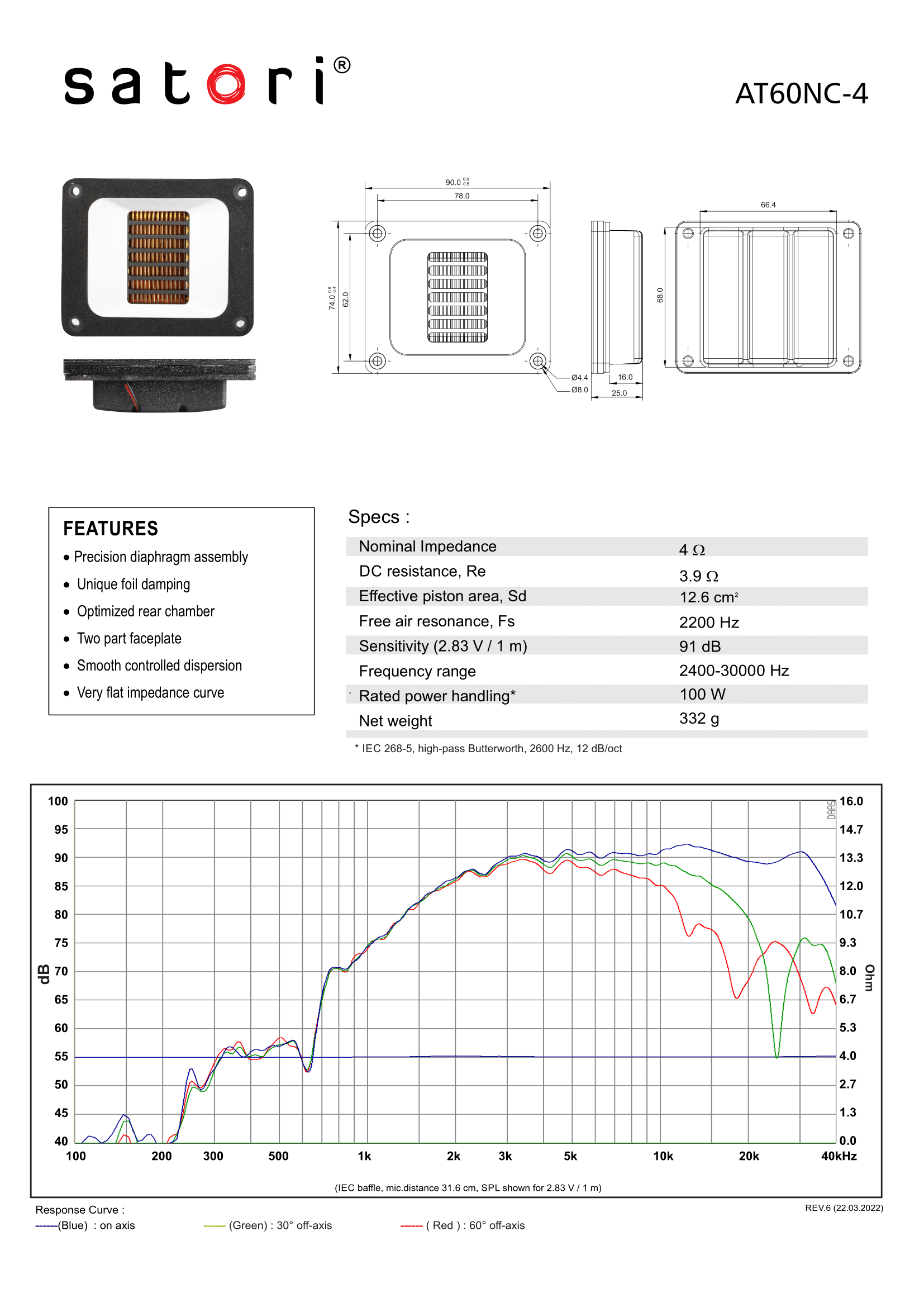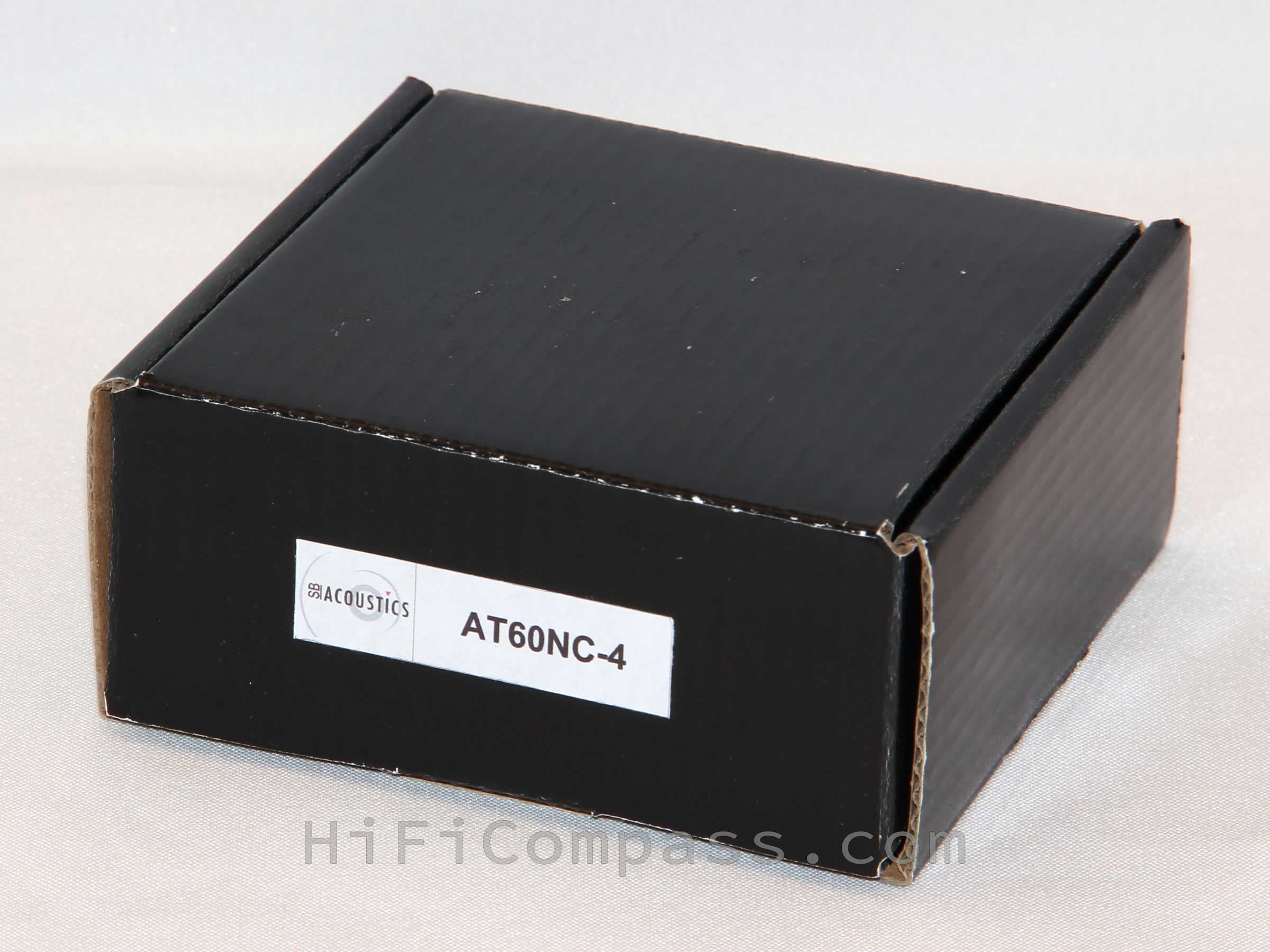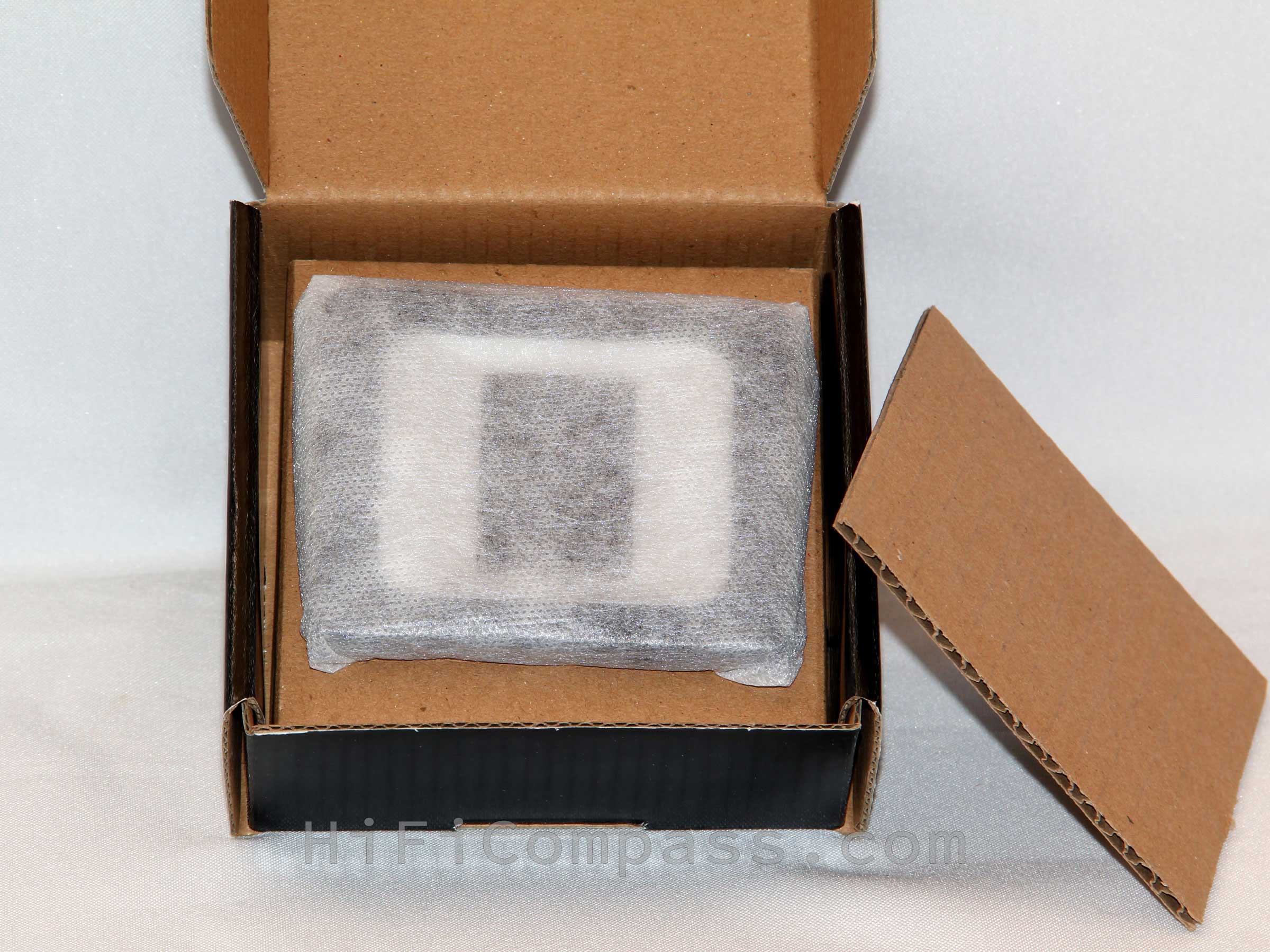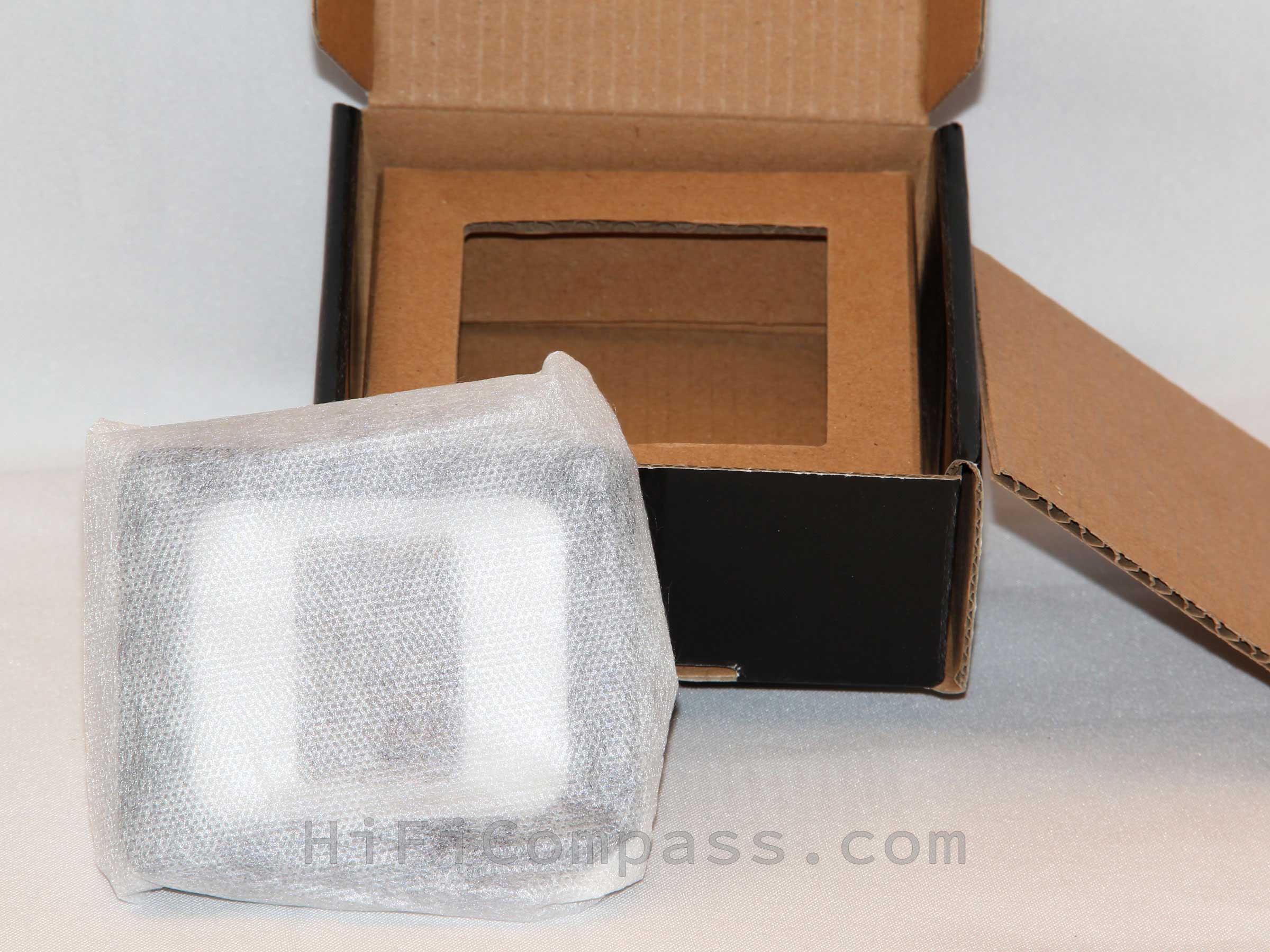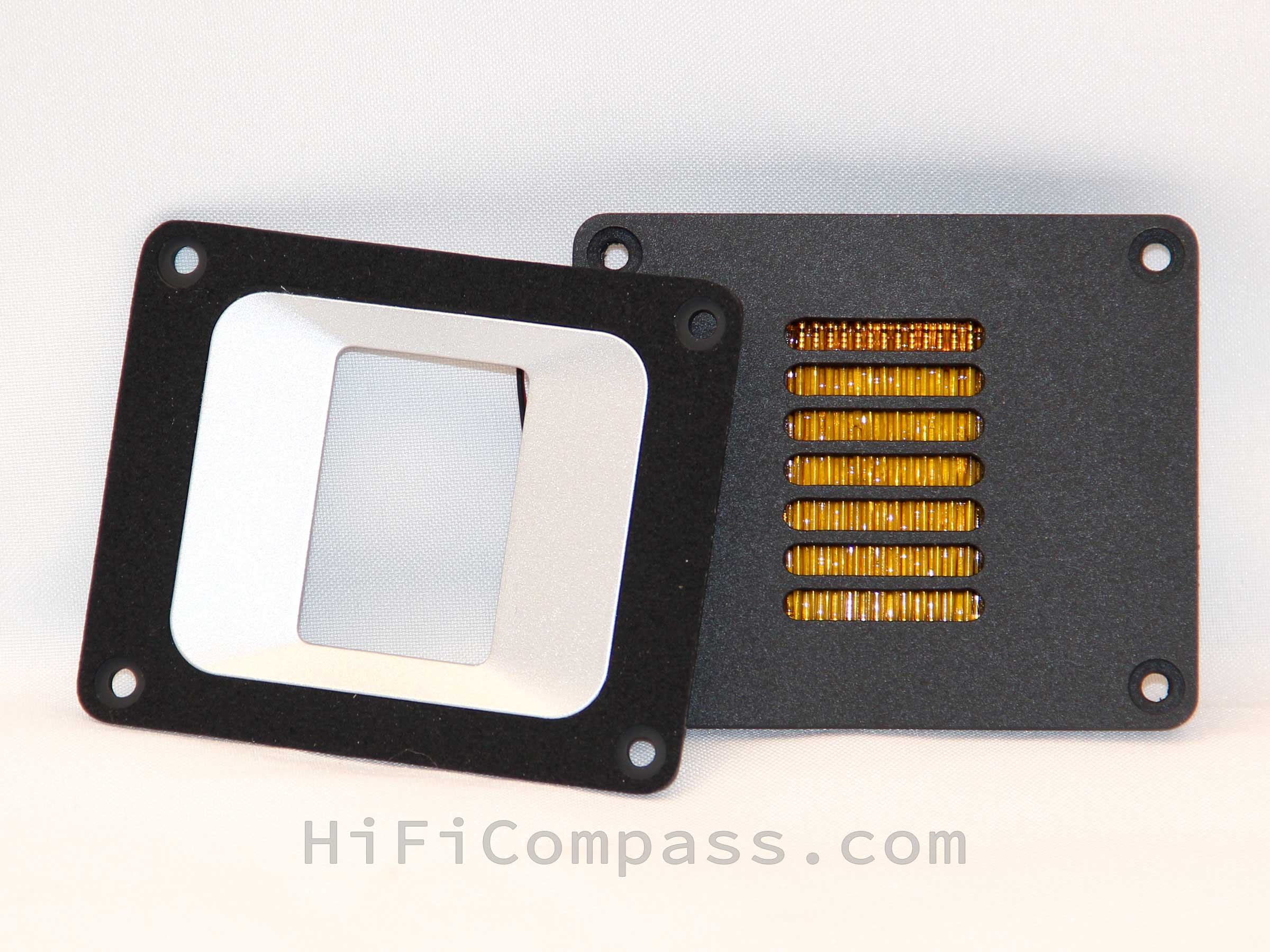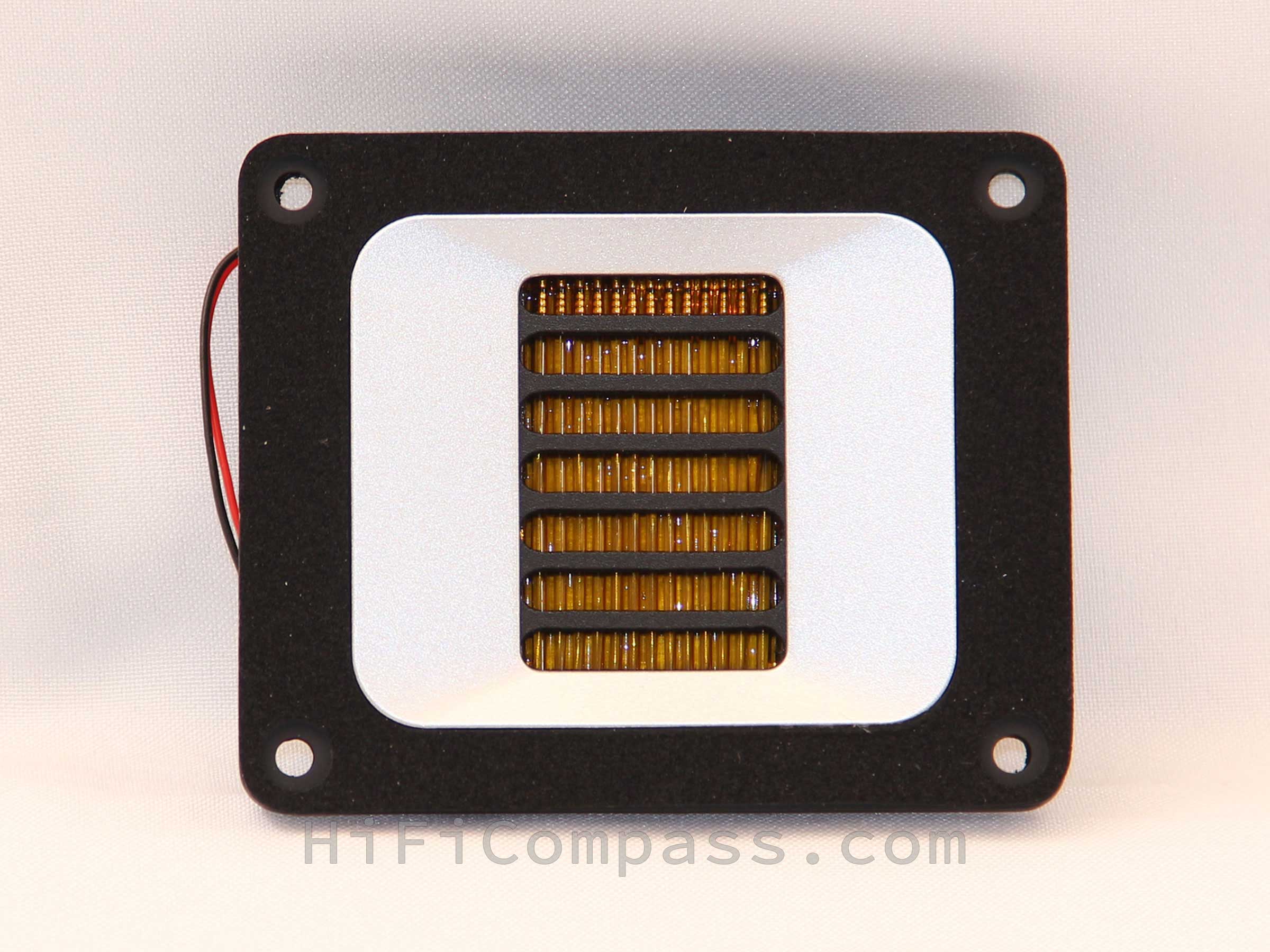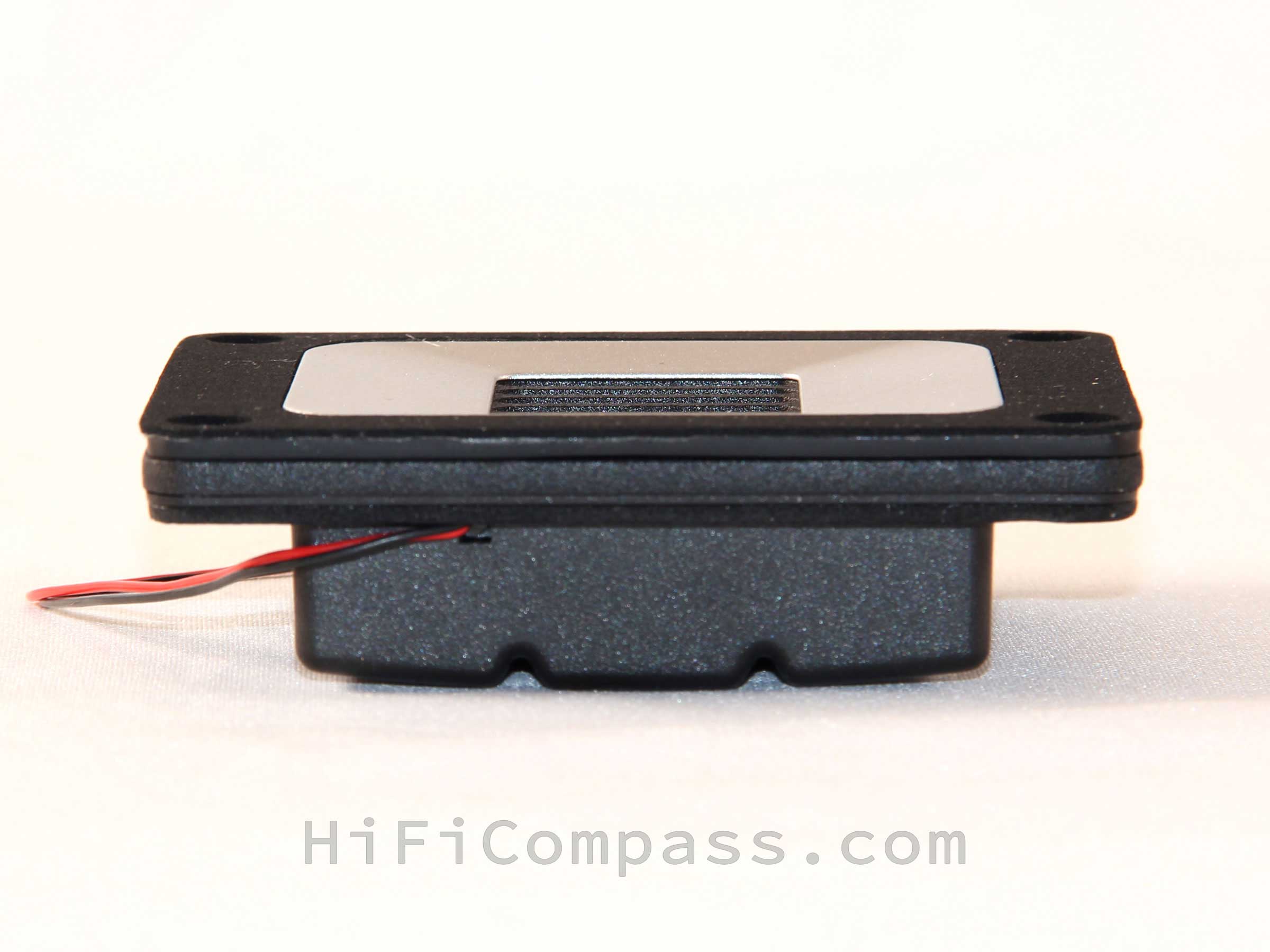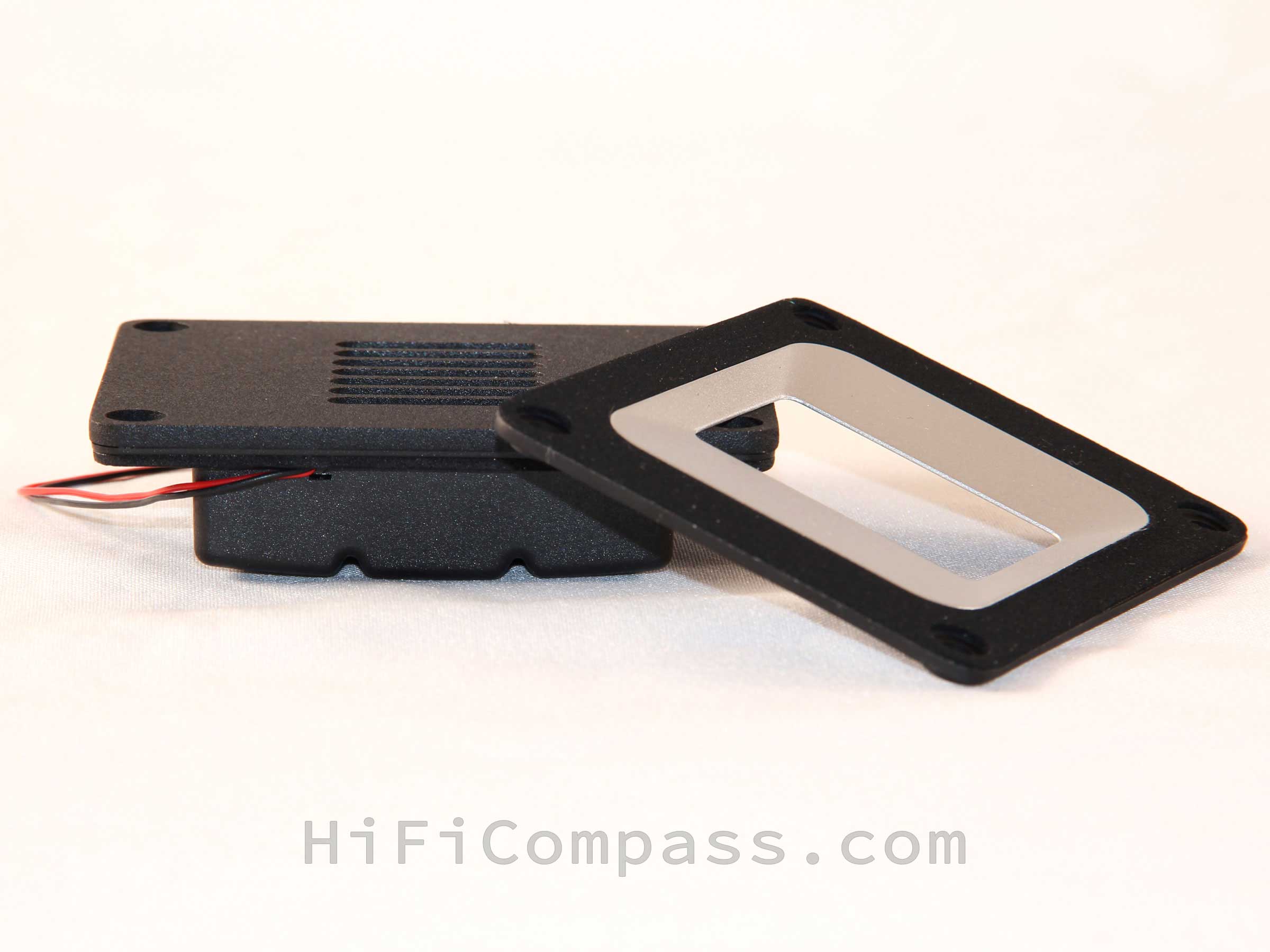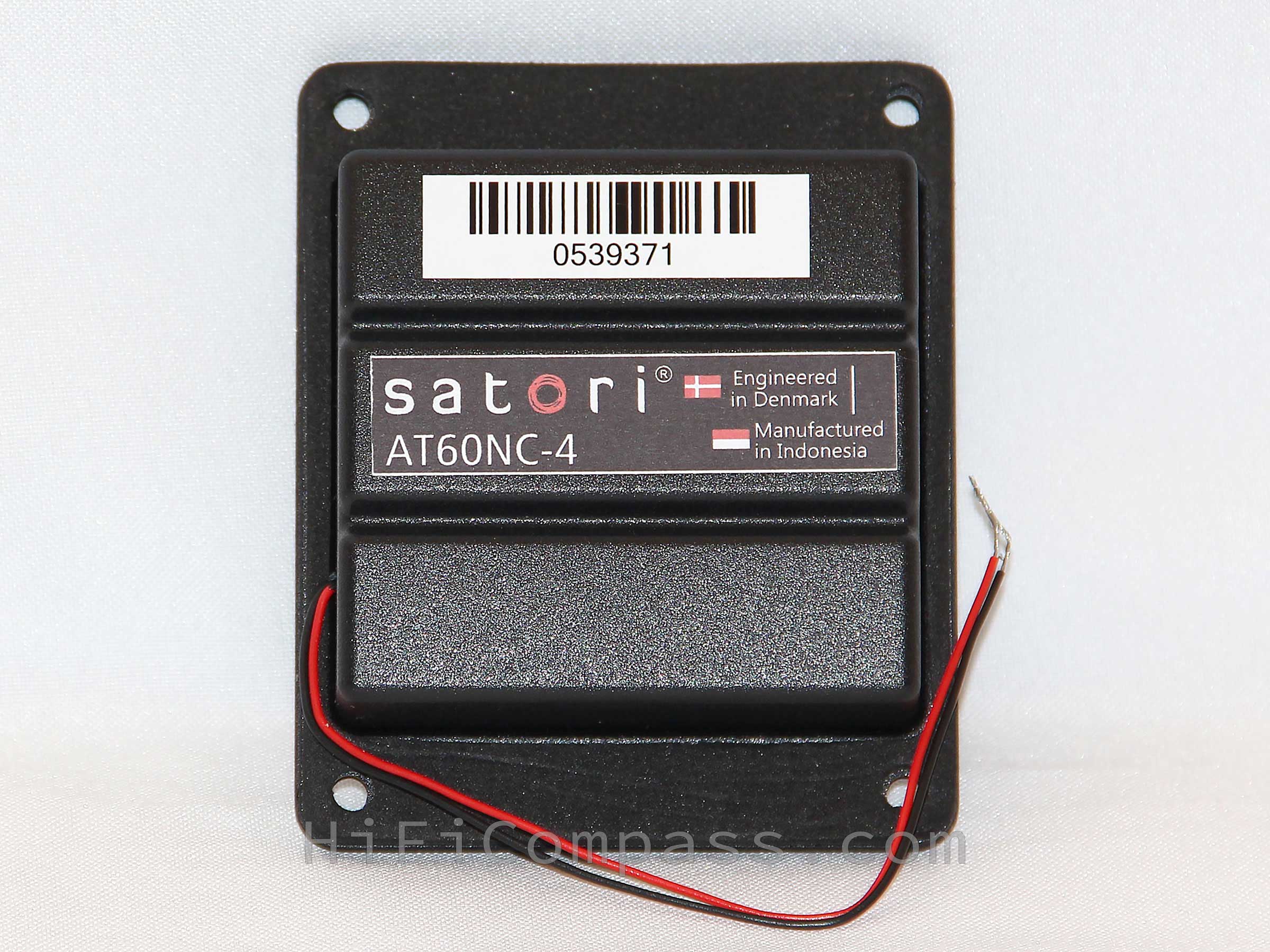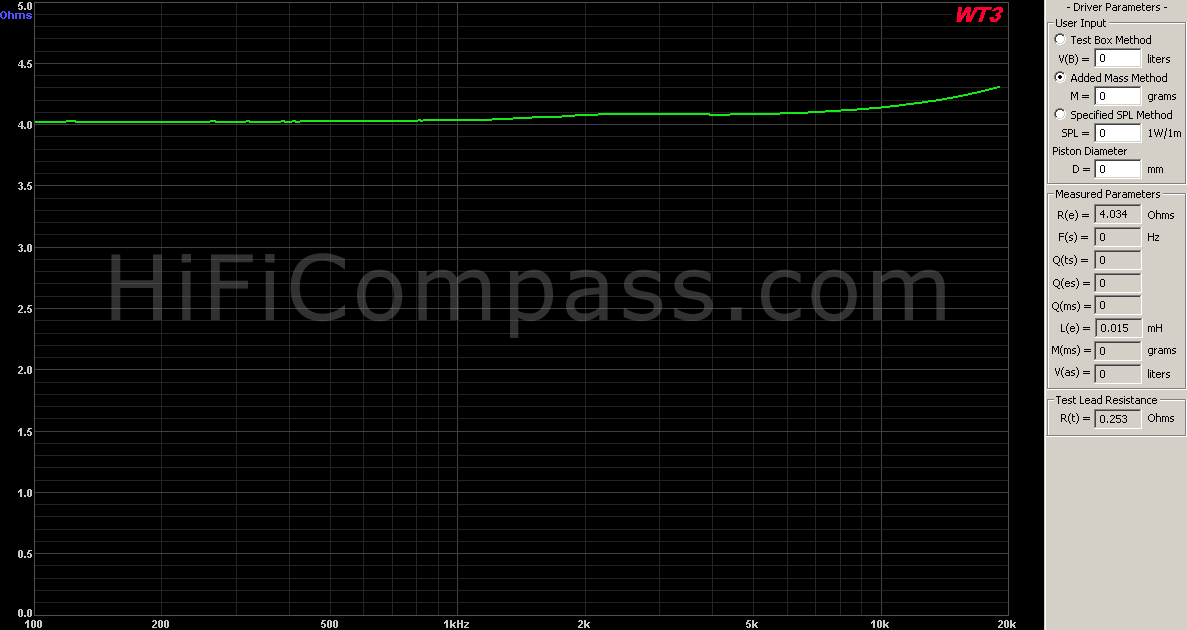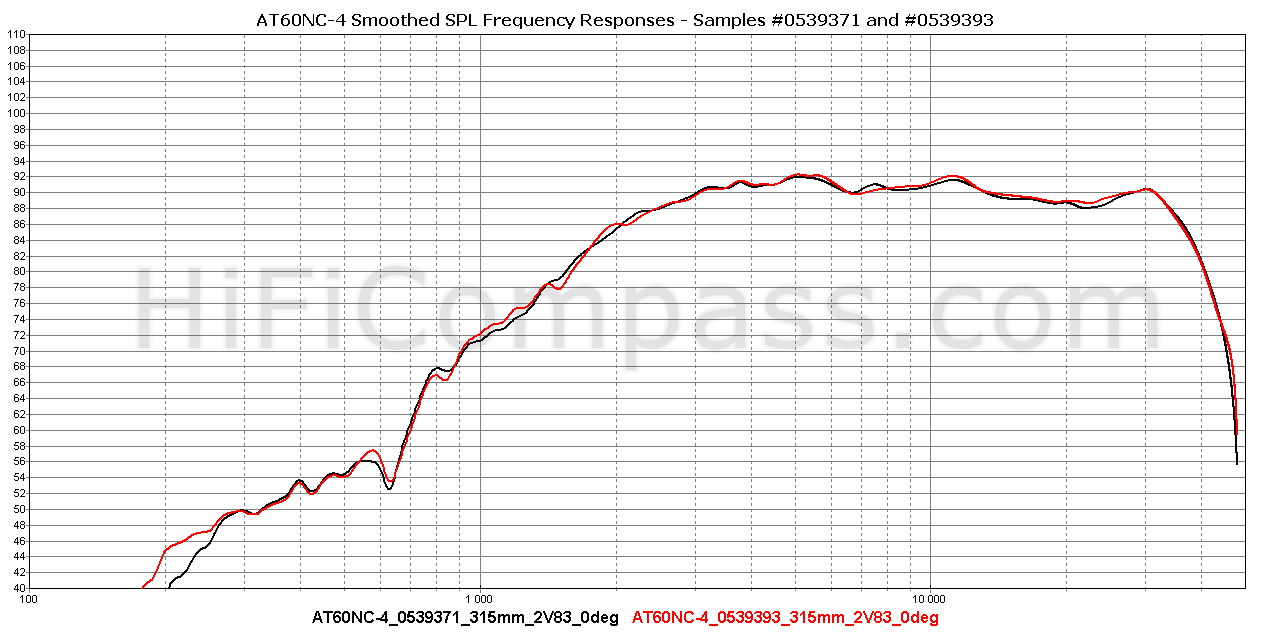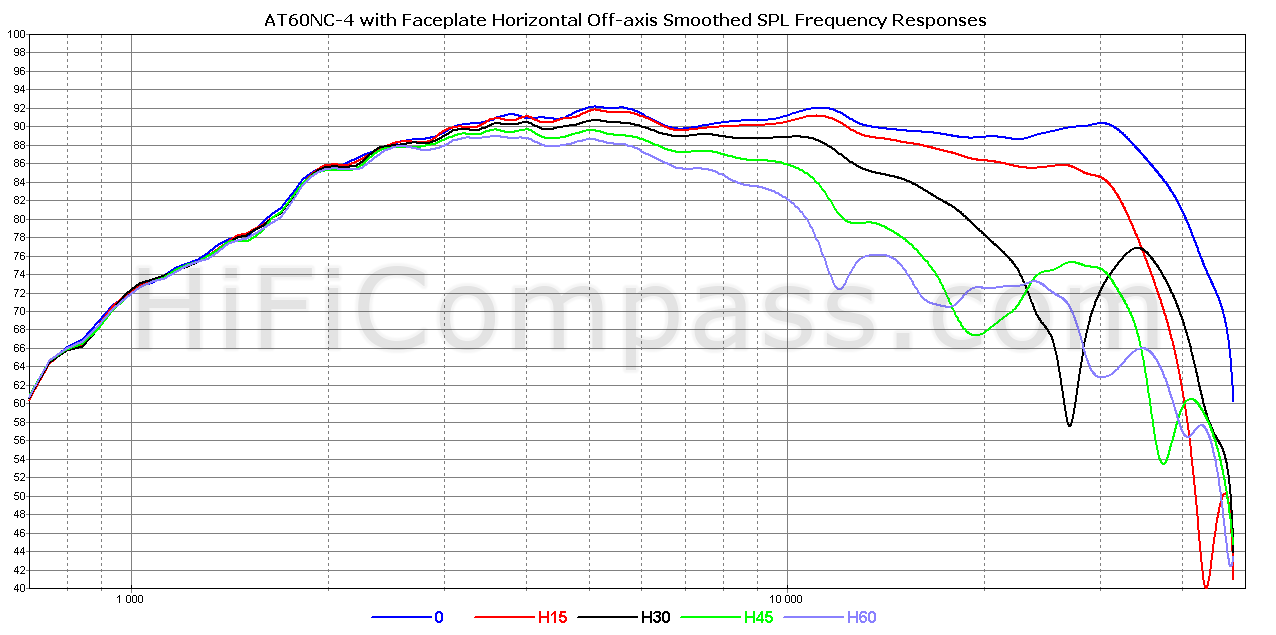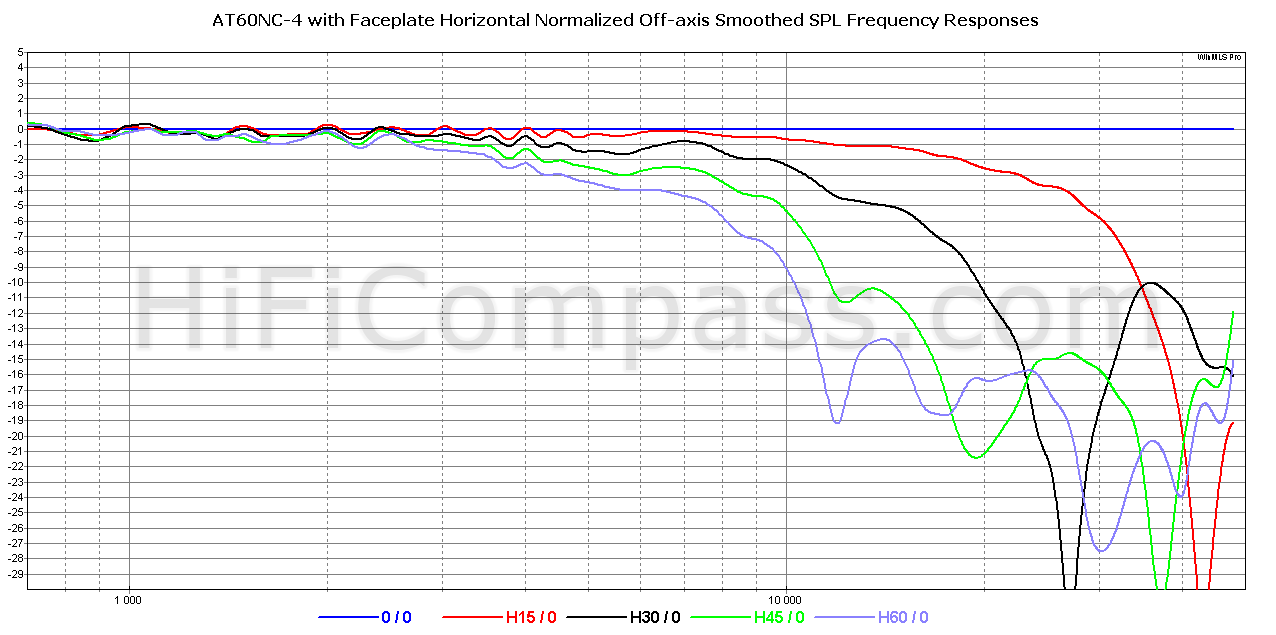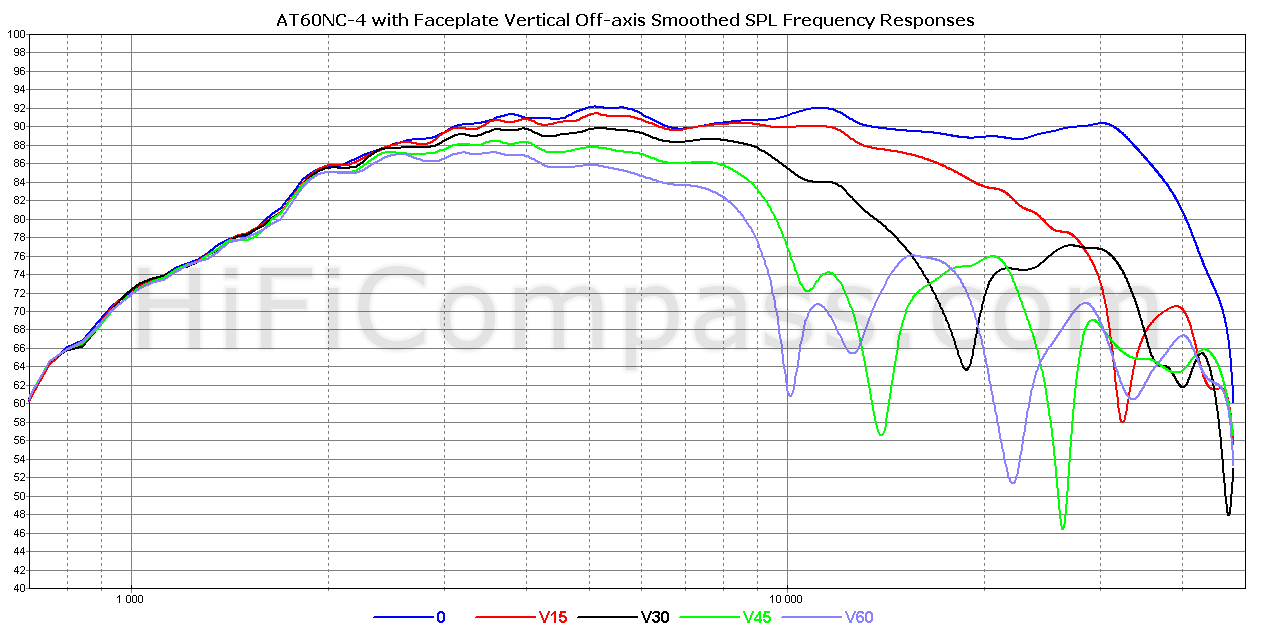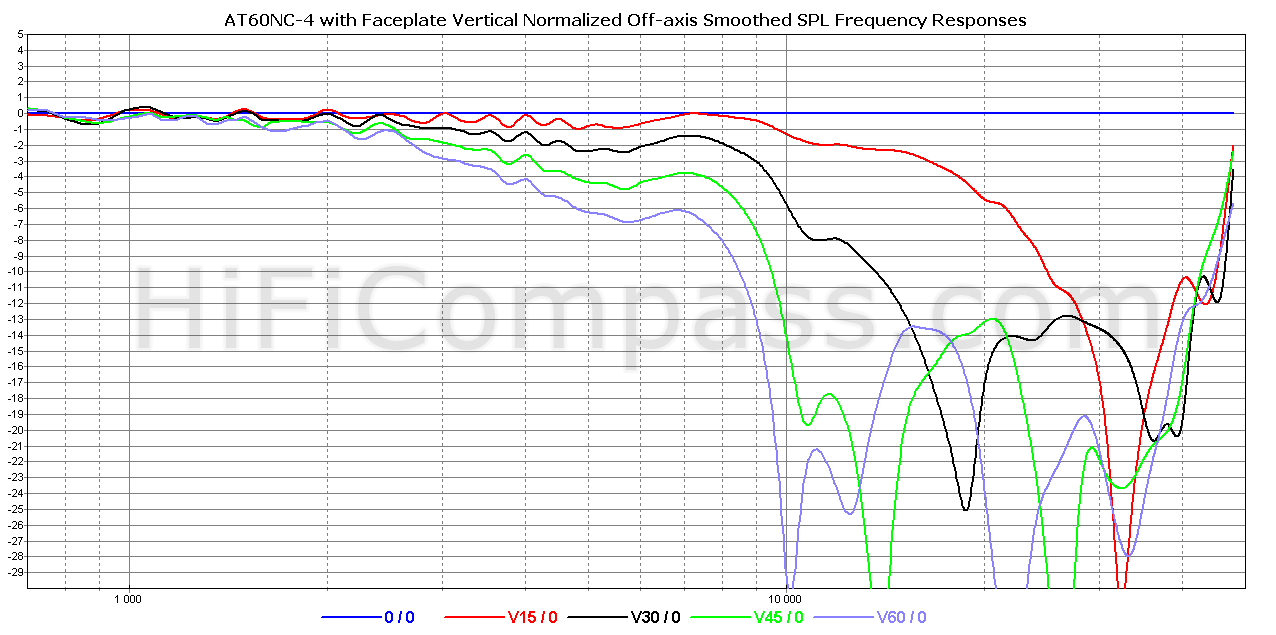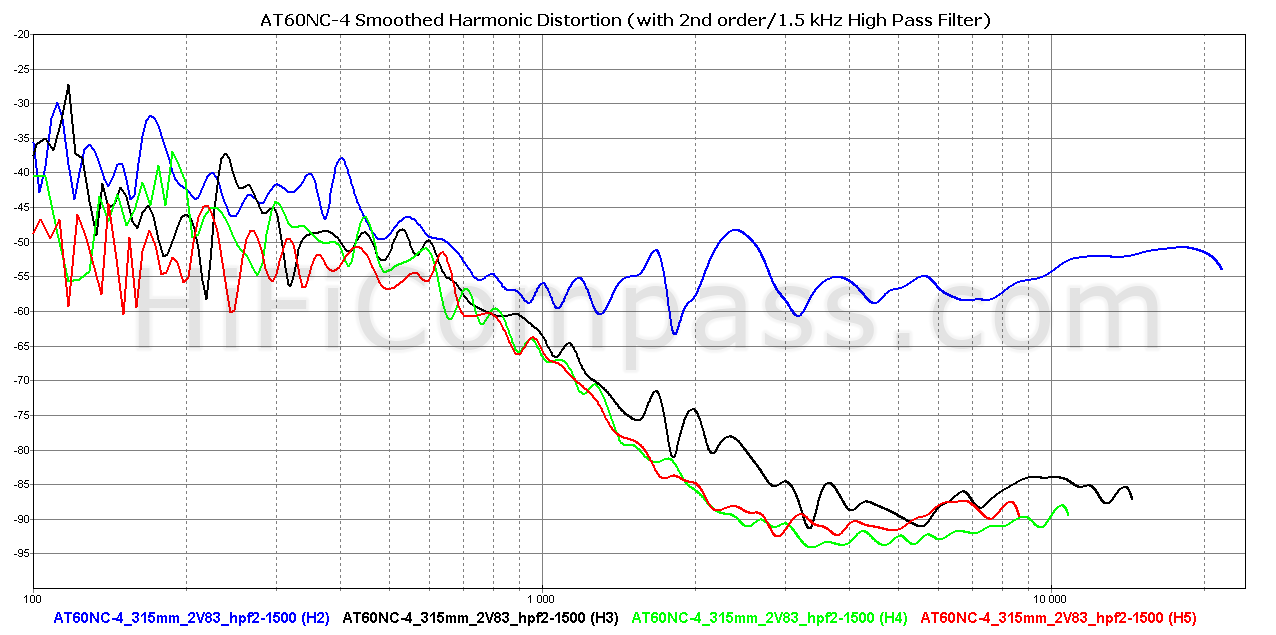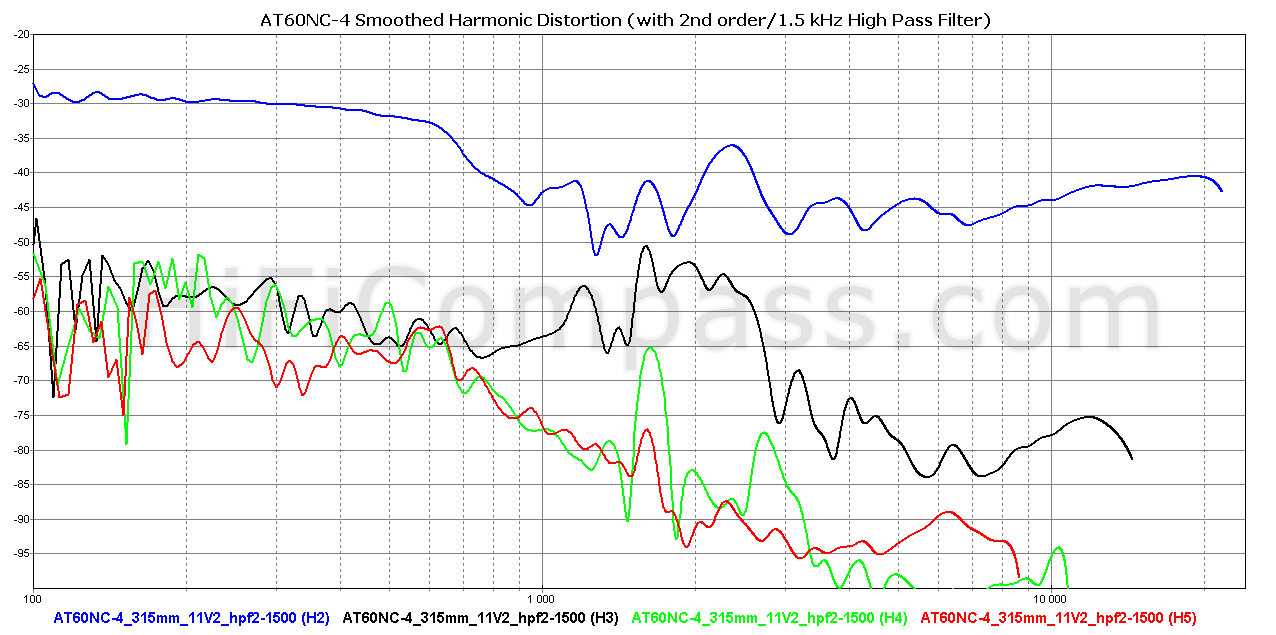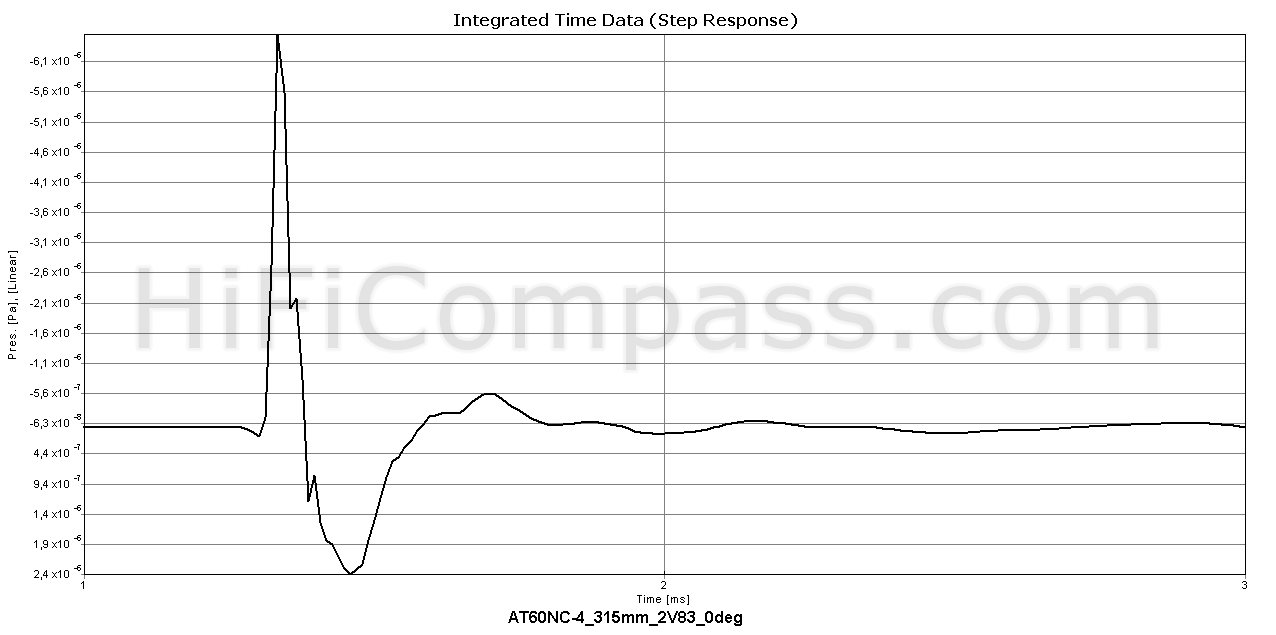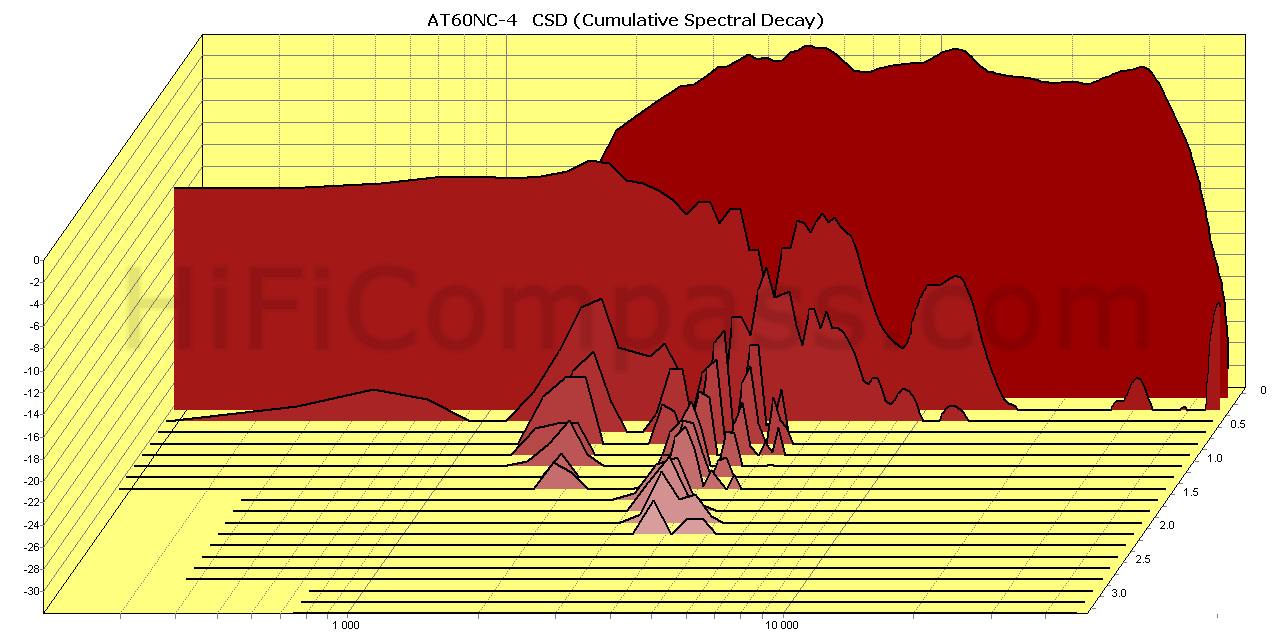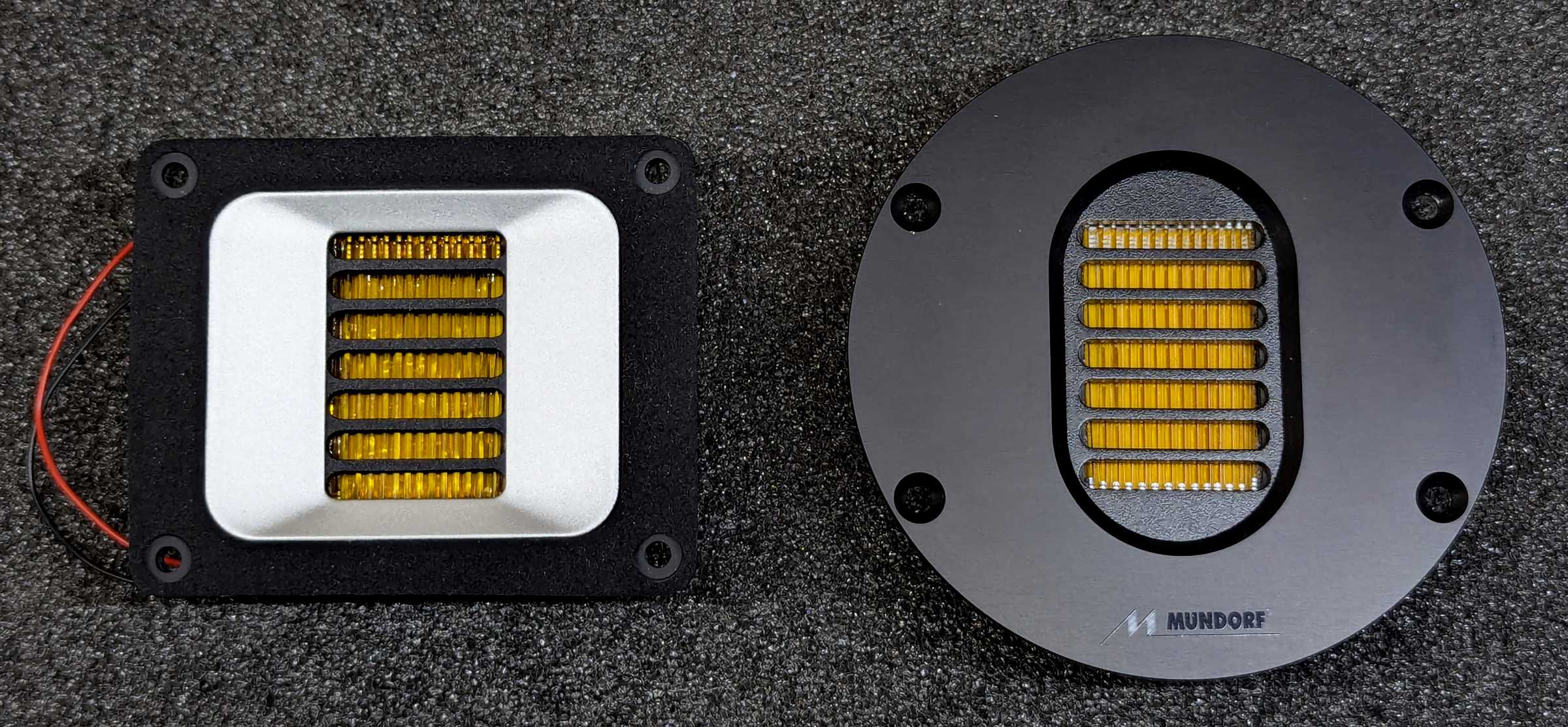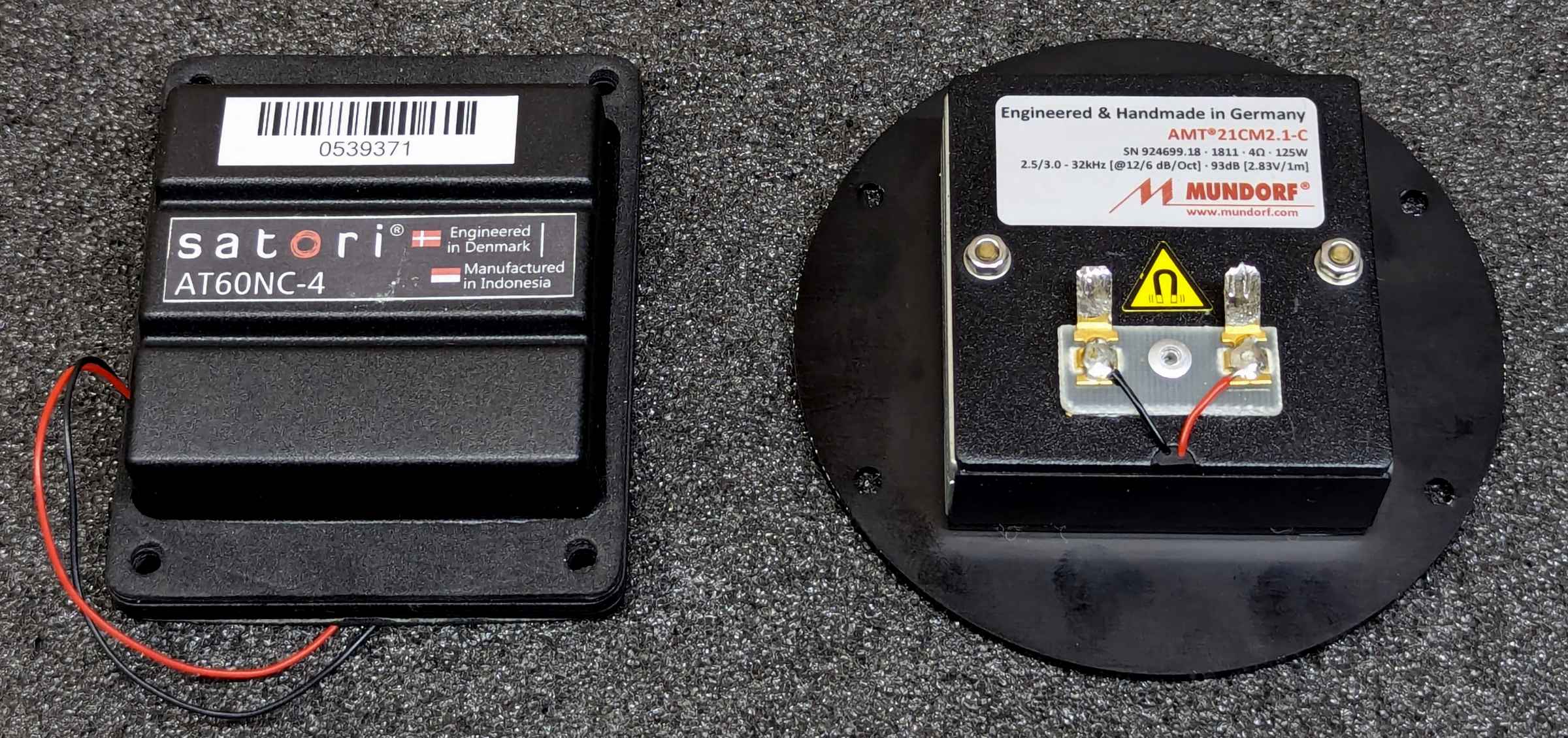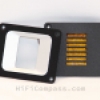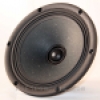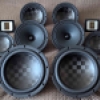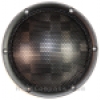HiFiCompass
Satori AT60NC-4 AMT tweeter review
In the late 1960s, German engineer Oskar Heil invented a new type of electroacoustic transducer called the Air Moition Transformer (AMT). In 1972 he received a patent for the first AMT electroacoustic transducer. Characteristic features of this new type of transducer are the very low specific mass of the moving system, the high output and the wide frequency range. Thanks to these properties their sound is characterized by high “speed”, detail, transparency and airiness.
The American company ESS Labs immediately licensed the new technology and in 1973 released its first speaker system AMT1 with its legendary ESS Heil Air Motion Transformer driver. Over the next fifteen years, ESS Labs completely dominates the market of loudspeakers using AMT technology, producing about 30 models. Due to patent restrictions, AMT technology was not widely adopted at the time.
Since the 1990s, with the expiration of patents and the advent of powerful compact rare earth magnets, AMT transducers, we can say, have gained a second breath, and there are many models for home and professional audio from ADAM Audio (USA), ELAC (Germany), ETON (Germany), Beyma (Spain), Eighteen Sound (Italy), Hygeia (Taiwan), Zhejiang Tianle Audio (China). A wide range of tweeters is offered by the German company Mundorf, whose products can be found in loudspeakers of the highest price category.
In April 2020, the Indonesian company Sinar Baja Electric joins the “Dr. Oscar Heil club” and updates its top-of-the-line home audio speaker line under the Satori brand with a new model of the AT60NC-4 AMT tweeter, which we will get to know very closely today![]() .
.
I would like to thank Mark Thomsen (Marketing and International Sales Manager at Sinard Baja Electric) and Frank Nielsen (CEO & Owner at Danesian Audio ApS) for kindly providing me with samples of Satori AT60NC-4 speakers for testing and helping me solve logistical problems.
Here you can learn about the history of the SB Acoustics and Satori brands, as well as one of the world's largest speaker drivers manufacturer - Sinar Baja Electric (www.sinarbajaelectric.com).
Standard SB Acoustics datasheet. It is quite laconic, but at the same time contains almost all the information a loudspeaker designer needs, with the exception of the outer radii of the rounding of the corners of the mounting flange.
Of all the characteristics, only the frequency impedance response can be called outstanding - it is flat as a table. I didn't even notice it at first!
The SPL frequency response is more or less flat and extends up to 30 kHz, which is good, but down to 2.5 kHz only.
The sensitivity of 91 dB at 3.9 ohm impedance and 12.6 cm2 diaphragm area I consider rather mediocre.
SB Acoustics' standard, sturdy packaging made of durable, glossy corrugated cardboard. Inside, the speaker is secured by cardboard inserts with shaped cut-outs. The front side of the speaker is additionally covered with a flap of soft cloth to prevent excessive friction between the faceplate and the rough cardboard.
The rectangular aluminum mounting flange has a nice matte micro-textured rough graphite-colored powder coat finish. In the center of the flange there is a rectangular window with horizontal ribs, behind which the corrugated diaphragm is visible. The mounting flange acts as one the magnetic parts of the magnet system and the horizontal ribs are an indispensable element of the design, at the same time protecting the diaphragm from external influences. The four fixing holes at the corners have recesses for the heads of the fixing screws. A foam rubber gasket is glued to the back of the flange.
An additional 2 mm thick removable faceplate is also made of aluminum and is black powder coated on the back and silver powder coated on the front. On the front side, a thin frame made of black rubber foam with a thickness of about 0.7 mm is glued around the perimeter. The central silver part is thinned to a minimum approaching the center window, thus creating a very light correction element for sound radiation. The additional faceplate is very neatly made and is simply a pleasure to hold.
On the back side, you can see only a tightly glued plastic cover that covers the tweeter's insides. The cover is quite thin and responds well to finger tapping only in the central part.
The thin and flimsy flexible wires are nothing but puzzling. For a top product, this is simply indecent. Well, at least they could have put the terminal block on the back cover...
The manufacturing quality is exemplary, there is nothing to complain about. Perfectly fitted parts, complete absence of any cosmetic defects, no burrs, misalignments, chips and glue marks.
The impedance frequency response is absolutely perfect, something you rarely see. Absolutely flat and smooth as a table across the entire frequency range. This behavior is typical of well-designed AMT tweeters. There's nothing more to say. Bravo!
On-axis frequency response (at 315 mm)
Below are the axial smoothed frequency responses for two AT60NC-4 samples with an additional faceplate, measured in a test baffle at a distance of 315 mm from the microphone at a voltage of 2.83 Volts (smoothing 1/12 octave):
The responses of both samples match each other perfectly, even though the tweeters are shipped individually rather than as a matched pair. The shape of the frequency response corresponds well to the datasheet over the whole range, except for the 3 - 6.5 kHz interval, where instead of a flat section there is a small hill up to 2 dB high. The measured average sensitivity can be estimated at 90-91 dB, which is almost identical to the datasheet.
In general, the on-axis frequency response is quite flat and smooth. Unevenness in the range of 2.5 - 33 kHz does not exceed ±2 dB. Below 3 kHz it drops with an average slope of about 12 dB/oct.
Off-axis frequency responses (at 315 mm)
Below are the tweeter's off-axis frequency response diagrams (with an additional faceplate) - the usual and normalized ones, where the on-axis frequency response is taken as the reference, and the off-axis ones reflect only the difference with it. Since the AT60NC-4 diaphragm is rectangular and has two planes of symmetry, let's first look at what happens in the horizontal plane:
The off-axis frequency responses are in perfect order. No unpleasant surprises were found. They monotonously decrease with increasing deviation angle and frequency throughout the entire range. Despite the relatively large diaphragm area (12.6 cm2), the horizontal directivity pattern is quite wide, even wider than that of Satori dome tweeters with a smaller diaphragm (TW29DN, TW29TXN, TW29BN, TW29RN).
Now let's see what happens in the vertical plane:
Because the tweeter's diaphragm linear size in the vertical plane is larger than in the horizontal plane, the off-axis characteristics are different. The tweeter maintains a more or less wide dispersion up to about 8 kHz, after which it begins to narrow sharply. In real-world applications, this can be both an advantage and a disadvantage.
Overall, the average sound dispersion width of the AT60NC-4 is about the same as the aforementioned Satori tweeters, resulting in about the same radiated sound power.
To avoid overloading the review with graphs, I have not included off-axis responses with the extra faceplate removed. These can be found on the full tweeter measurements page. All I can say is that the extra faceplate is not only intended to improve aesthetics, it also slightly increases on-axis response (up to 1 dB) and slightly reduces dispersion (increases the directivity index) in the 3 to 7 kHz range.
Harmonic distortion (at 315 mm)
Above are the diagrams of harmonic distortion at voltages of 2.83 and 11.2 Volts, which corresponds to average sound pressure levels of 91 and 103 dB, respectively. The measurements were made on axis at a distance of 315 mm to the measuring microphone. To limit tweeter overloading, a second-order digital high-pass filter with a cutoff frequency of 1500 Hz was used when measuring harmonic distortion. In these graphs, we analyze the frequency range only above 1500 Hz.
At all sound pressure levels, the entire operating frequency range is dominated by an exceptionally euphonious second harmonic.
At 2.83 Volts the curves look fabulous, down to 1.5 kHz all harmonics remain very low. It is rare to find such a thing.
Even at 11.2 Volts, all harmonics remain low, with only the third harmonic rising below 3 kHz.
Overall, I would characterize the overall harmonic distortion level as “very low”, one of the lowest I've seen in tweeters. Great!
Voice coil current harmonic distortion
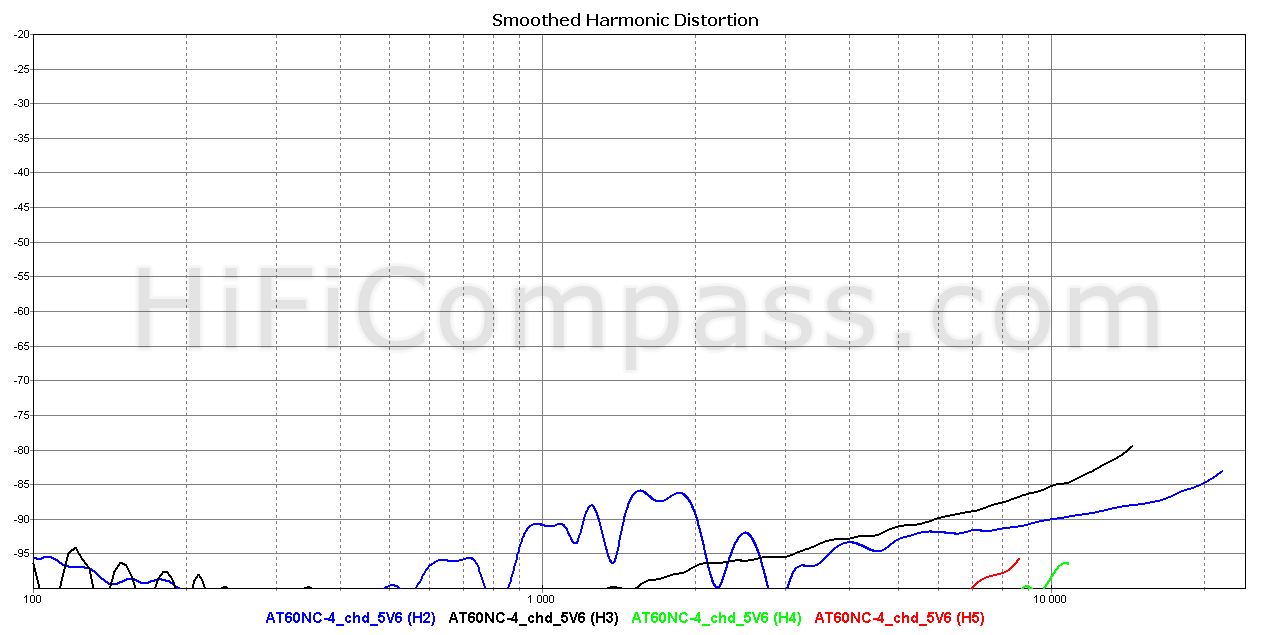 This type of measurement, despite its simplicity, is an excellent tool for assessing the linearity of a speaker motor. The diagrams above show the frequency dependences of the 2nd, 3rd, 4th and 5th harmonics of the tweeter's current draw at 5.6 volts.
This type of measurement, despite its simplicity, is an excellent tool for assessing the linearity of a speaker motor. The diagrams above show the frequency dependences of the 2nd, 3rd, 4th and 5th harmonics of the tweeter's current draw at 5.6 volts.
The AMT driver operates on a completely different principle, so it is completely free of the hysteresis distortion in the magnetic system that is characteristic of traditional moving coil electrodynamic drivers. This is reflected in the very low level of current harmonics. In this case, the distortion of the AT60NC-4 is so low that the harmonic curves are almost identical to the distortion of my measurement setup. This means that the real current distortion of the AT60NC-4 is at an even lower level, except for the 500 - 3000 Hz interval, where the spike in the second harmonic is due to the tweeter. This behavior can only be described as fantastic!
The tweeter's step response rises up very quickly. It returns to rest quickly, but oscillates with a decent negative overshoot. This behavior is typical for systems whose behavior in the frequency domain is described by second-order polynomials with a pole quality factor of about one or more. Without being clever, this is the usual behavior for most tweeters.![]() .
.
Waterfall is another way to investigate the linear response of a system, allowing us to better identify any hidden resonances that are difficult to discern in other types of measurements:
No resonances have been detected. The waterfall is excellent, after 0.5 ms everything becomes completely quiet. Tails in the 3 - 5 kHz range do not count, this is a measurement artifact that shows up in most of my tweeter measurements.
After completing the measurements, I took the time to listen to the tweeter in the test baffle and in a three-way speaker (the crossover frequency was about of 2.5 kHz, second “electrical order” of filtering).
AT60NC-4 is not the first AMT tweeter I have to deal with. Characteristic “generic” features are recognized from the first notes. Crystal clear and transparent sound. Lots of air and amazing detail. A feeling of light and weightless sound. Warm timbre with very good texture and lots of after-sounds. High frequencies are juicy and ringing in a good way. The response speed is faster than lightning, so the sound attack is worked out perfectly.
Basically, these qualities should create an image in our head of an ideal tweeter, right? What more do we need from an ideal tweeter? In my opinion, the AT60NC-4 would be perfect if it had more of a sense of body and three-dimensionality in its sound, as well as more aggression and toothiness on percussion.
I had the opportunity to compare the AT60NC-4 side-by-side with a similar tweeter with the same diaphragm area from the German company Mundorf - the AMT21CM2.1-C. Interestingly enough, these tweeters are very similar in design, even the lead wires are the same:
The Mundorf's tonal balance is lighter, the sound is a bit sharper, more open and transparent. The Mundorf's output feels 3-4 dB higher. The Satori's tonal balance is darker and a bit lower in frequency, so the vocals are fuller and the sound has more depth. Otherwise, the tweeters sound very close to each other. Thus, AT60NC-4 can serve as a good alternative at twice as humane price![]() .
.
Based on the measurements, the AT60NC-4 can be recommended for use as a tweeter in a high-quality multi-way loudspeakers in the frequency range of 2.5 kHz and above, together with a high-pass filter of the second order and higher. The manufacturer's declared nominal power of 100 W (that's quite a lot, I believe it is IEC 60268-5 long term power) and very low distortion should allow you to push the tweeter with a decent amount of power without the risk of overload.
What is the price and where to purchase it?
The retail price of the AT60NC-4 is on average €200/piece excluding VAT. You can purchase it from the following online stores:
I can be truly happy for Sinar Baja Electric. Their first and so far the only one among Satori and SB Acoustics brands, the AT60NC-4 AMT-type high-frequency driver made a very pleasant impression with its sound and measurements. The measured characteristics and parameters agree well with the datasheet. I would very much like to see the company expand its range of this type of drivers with a larger model in the future.
So, what I liked:
- Very low harmonic distortion
- Almost complete absence of current distortion (beyond the resolution of my measuring setup)
- Very high sound resolution and sound attack speed
- Additional faceplate for slight correction of sound dispersion
- Excellent workmanship
What I didn't like:
- Very flimsy lead wires incompatible with the high status of the product
- I would like more fullness and physicality in the character of the sound
More detailed measurement results can be found here:
Yevgeniy Kozhushko/01.02.2025
CONTACTS
- Ukraine
- (+380) 95 904 7827
- hificompass@gmail.com
LAST NEWS
-
01 Feb 2025
-
06 Jan 2025
-
06 Jan 2025
-
17 Oct 2024
